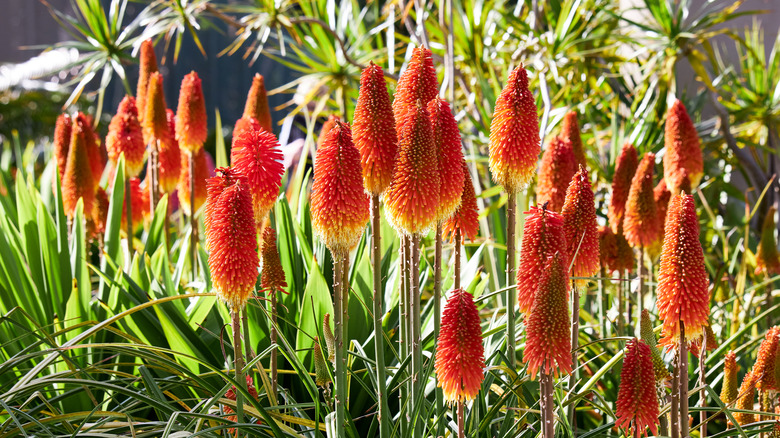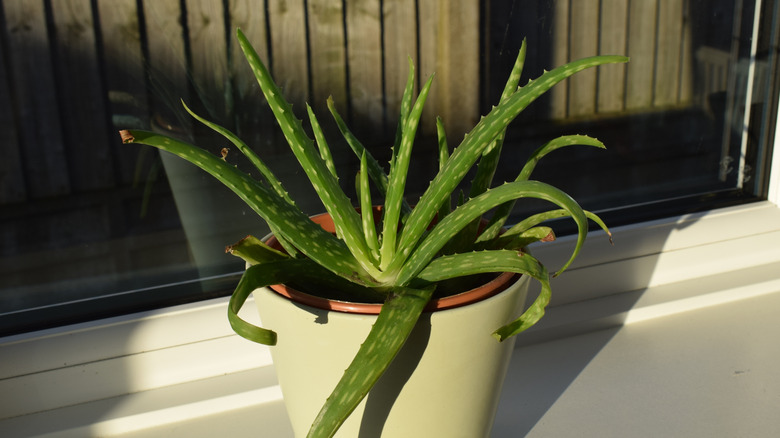How To Get Your Aloe Plant To Flower
Of all the reasons to grow an aloe vera plant — from its soothing gel to its tolerance for neglect — flowers aren't typically at the top of the list. This common houseplant is more known for its signature spiky leaves than colorful blossoms. But once you see the unique beauty of an aloe flower, you may get the itch to get your own plants to bloom. It's not an easy task indoors, but the most important factor is to offer your plant as much bright light as it needs.
Aloe plants are evergreen succulents that are native to sub-Saharan Africa, Madagascar, and the Arabian peninsula. Every year, they produce bright tube-shaped flowers clustered on a tall spike; these are typically red, orange, or yellow. This usually occurs in the late winter to early spring, and a thriving aloe vera plant can even bloom multiple times in a single season.
But aloe vera is hardy enough to make it through the winter only in the warmest USDA growing zones, 10 to 11. In the rest of the country, it's grown as an indoor houseplant, and it can flower at other times of year when grown indoors. However, that's only if you can get it to bloom inside at all, which is challenging — in their native habitat, aloes evolved to get much more light than is typically available indoors. However, with the right conditions and a little luck, you might be successful.
More light is key
First, know that only mature aloe plants can flower, so don't try to force your aloe to bloom until it's at least 4 years old. Then the most important step is to increase your plant's light exposure, particularly in the spring and summer. It needs at least six, but preferably eight or more, hours of bright sunlight each day. You may need to move the plant to different sunny spots throughout the day to achieve this indoors, or use a grow light. If it's above 70 degrees Fahrenheit outdoors, move the aloe vera outside, letting it gradually adjust to full sun. Bring it indoors if temperatures dip below 60 at night. Note that you'll need to water your aloe vera more frequently if it's in direct sunlight every day.
Aloes do best with deep, infrequent watering, and in order to flower, they must remain in their ideal temperature range of 55 to 80 degrees without any sudden changes. It also helps to provide a period of dormancy in the fall and winter, with less frequent watering and cooler temperatures. Also, remove any pups since they take energy from the main plant, and apply a slow-release fertilizer in early spring.
If your efforts are successful, stick to the same care routine and enjoy the show. The flowers should last for a few weeks, after which you should deadhead them. And if your aloe still doesn't flower, don't assume you're doing anything wrong — indoor aloes just don't flower as often as outdoor ones. It doesn't hurt to keep trying, or experiment with other indoor plants that flower more readily, like kalanchoe or African violets.

